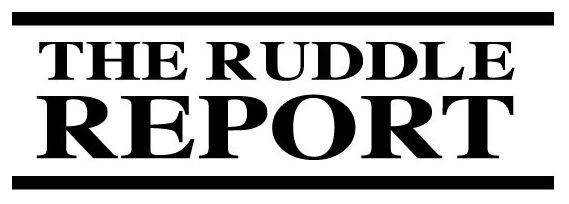
Do Patency Files Cause Post-Operative Pain?
Today’s question is really a question that I don’t agree with, but the assertion from the question is that patency files, and I’m reading right from the question, sometimes cause patient’s teeth to become extremely painful due to the injury to the periodontal ligament… especially those cases where there’s an irregular glide path or, anatomically, a sharp 90-degree curvature.
Well, let’s talk a little bit about apical patency as it relates to post-treatment symptoms.
My first comment is, and I can only go by my experience, so I can’t go by the experience of colleagues I don’t even know… Most of the time when I answer these questions, the dentist has met me because they were a face in the crowd of a large lecture. That doesn’t mean I’ve ever met them, or I know them, or have any sense of how they approach their everyday endodontics. So, when I get this kind of a question, my first comment is, well that’s just not true.
So, whenever I give answers to questions, you should be asking, “When Ruddle gives the answer, is it true?” Because it may not meet your clinical experience and that doesn’t mean that what you’re doing is correct or what I’m doing is correct, it just means that we might be able to do it in a different way and we may have a same observation, or we may do it in different ways and have different observations.
My observation over 38 years of practice is patency files, as I’ve described in how I use them… that’s probably the key here… do not cause any more than minor discomfort following a visit. So, post-treatment, to my colleague who asked the question, I would normally say to you, if you were my patient – now, I’m psychodrama role-playing:
“We’ve had a great session today. We’ve accomplished a lot. I’ve negotiated the full length of your canals and I’ve amputated the incoming neurovascular tissue that was coming from the bone into the end of your root. Where it’s been amputated causes an injury and that injury will be a little bit uncomfortable. You will have mild soreness for about two days. You will not have any spontaneous pain. It would be more elicited pain, meaning if you bite on the tooth, it would be sore. If it’s more than this, give me a call because I would want to know.”
This is how I’ve given my post-operative instructions for 38 years. People do not have pain following an instrumentation visit. Obviously I like to do one-visit endodontics, but not all teeth that present can be done in one visit, for a variety of reasons. So, we’re talking obviously of probably the two-visit situation because if we did it in a one-visit procedure, it would then be hard to know, did the discomfort come from the patency file itself? Was it a little reagent that might have gotten through the foramina carried by surface tension on the patency instrument? Could we have pushed debris through the canal and is there bacteria that we’ve inoculated into the peri-apical tissues? Did we push just vital tissue out that would be very irritating and create a whole cascade of pathophysiological events called inflammatory response? And, of course, if you went ahead and filled the root canal system that same day, and you might have gotten a puff of sealer, could you attribute the post-operative report to the puff of sealer? Was it the file? Was it the reagent? Was it tissue? Was it bacteria?
So, there’s all these variables and what I’m going to say is, carrying a file to the RT, the radiographic terminus, by definition, the file would be minutely long. There’s a lot of confusion about this, especially from our SS White friends, but they’ll get it with time as they continue to learn and discover the edges of the truth. But, in the meantime, patency files are done with small, most flexible instruments. Shaping files aren’t carried to the RT, only small, flexible instruments. This is to encourage keeping the foramen open and unobstructed because, remember, it was open and unobstructed before we went into the tooth to commence with endodontics.
So, probably, when you’re having symptoms that you call as extremely painful, I would like to make a clear distinction… Maybe there was a little lack of control on working length? In other words, if the assistants are using aiming devices like the Rinn kit, they can line up the xray head with the aiming devices and hit the tooth pretty much perpendicular to its long axis. This gives us, pretty much, one-to-one images. So, when we pull down a diagnostic working length, whether it’s film based or you’re using a digital feature, we can have uncanny accuracy and usually be within about a millimeter or two on our diagnostic, tentative working length estimation. Which means, instruments should be pretty much kept around the end of the root. However, if the assistant has foreshortened or elongated a film, we could have quite a bit of distortion and in the case of elongation, we might carry a file several millimeters through the foramen.
So, I just wanted to get this out there because when we have a patent canal, you know, we didn’t describe in this question, I didn’t read, were we over-instrumenting by a few microns or a few millimeters? That would make a potentially big difference. So, to me, soreness is the “watch word”. There’s no spontaneous pain which means the patient can function, they can read, they can watch television, they can go to work and they can actually perform their tasks. There is no pain in their mouth. Only if they were to load the tooth would there be minor discomfort and that should be something that’s rapidly resolving over that 48-hour window I described.
One other comment, in two-visit endodontics, any canal that is patent, has meant the case has been fistulated. We all know how much we love a fistula pre-treatment, because that means we have an escape valve where pressure can build up and simply vent through the bone and the soft tissue and evacuate into the mouth. People that have fistulas might be concerned about the little bump on their gum but they’re certainly not ever reporting significant pain.
So, when you use patency files in the two-visit situation, you could say, all roots of all canals are fistulated and any edema in the bone surrounding the root has the potential to seep back up into the shaped canal where it can relieve pressure. So, patency is a critical concept because if we’re not patent, we can’t say for certain what’s in the apical extent of that canal. We can’t say if it’s pulp, inflammatory pulp, necrotic pulp. Is it dentinal mud that’s contaminated? Are there bacteria or is it a cocktail of all of the above? So, patency ensures, theoretically it encourages, our irrigant to reach the full length each time, every time, all the time.
This blog will not go into the regular glide path versus the irregular glide path. Patency is patency. Whether you have a glide path and you’re patent, or you do not have a glide path, but you have a pilot hole, both canals can be patent and the post-operative symptoms, I wouldn’t expect when endodontics is done with attention to detail, would be much different if you asked the same patient, that night of the treatment, how is your discomfort. It would be more or less the same, whether it was a patent canal that had a glide path, or a patent canal that did not have a smooth, reproducible glide path.
So, that’s my comments on patency. It’s often misunderstood and maybe the colleague is thinking it’s the patency file itself that’s causing this “extreme pain”. But, I would have a look back to … Did I go to length immediately? … I never even mentioned this, but obviously there’s a lot of things that we could talk about in this blog that all influence post-treatment sequelae. But, certainly, pre-enlarging a canal before trying to get into the apical third means you have much greater working width in the body of the canal. This means there’s the capability or the capacity for reflux, and reflux is just encouraging and promoting tissue and byproducts to elevate coronally where they can be suctioned off the occlusal table.
So, pre-enlargement is another great way that when we do use patency files, mitigates post-operative symptoms. I hope this answer helps.



